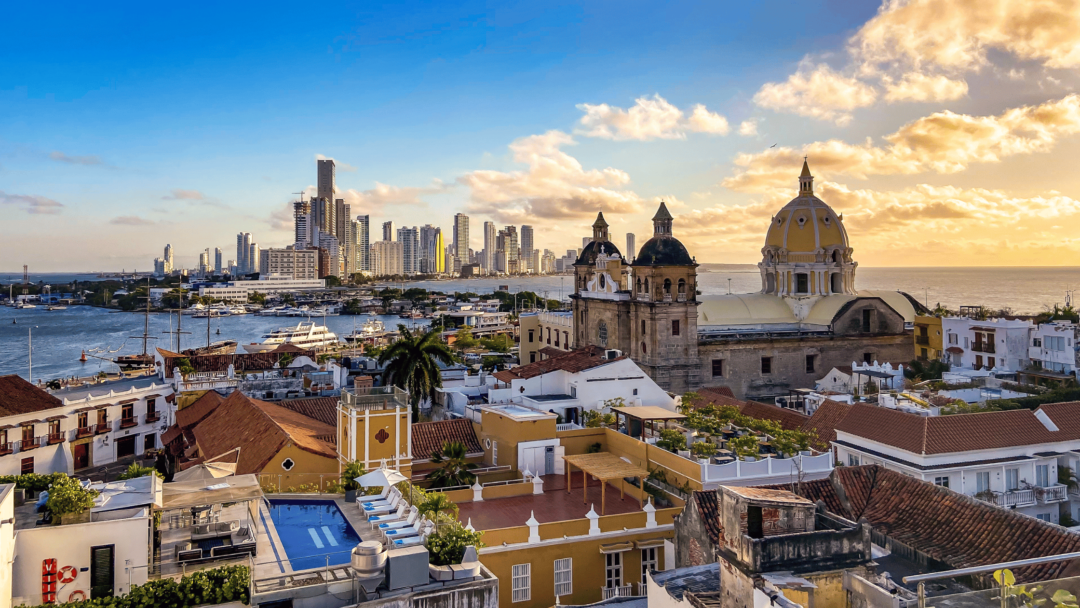When exploring Argentina, you’ll quickly discover that its culture is deeply woven into everyday life.
Traveling and reading are among the most popular hobbies in Argentina. These activities offer both locals and visitors a chance to engage with rich traditions and vibrant histories.
Whether you’re a fan of literature or an avid traveler, Argentina provides endless opportunities to immerse yourself in these activities.

Other activities like tango and the traditional Asado also top the list of beloved pastimes.
Tango, a passionate and rhythmic dance, is a staple in Argentine culture that allows you to express and explore the nation’s soulful heritage.
Meanwhile, Asado, a social event centered around barbecuing, invites you to experience the authentic flavors and communal spirit of Argentina.
By engaging in these popular hobbies, you gain more than just fun and relaxation; you also build a deeper connection with the local culture and people.
Understanding and participating in these activities can enrich your experience, providing a unique and fulfilling way to explore Argentina.
The Vibrant Culture and History of Argentina

Argentina’s culture blends indigenous traditions with influences from Spanish colonization and European immigration, creating a rich and diverse heritage.
This unique mixture shapes modern Argentine identity, reflected in its art, cuisine, and daily life.
Colonial Roots and Indigenous Influence
Argentina’s culture is profoundly shaped by its colonial history and indigenous roots.
Spanish colonization in the 16th century left a lasting impact on the country’s language, religion, and architecture. Buenos Aires, the capital, showcases colonial-era buildings and Spanish-influenced urban planning.
Before Spanish colonization, the region was home to various indigenous groups, including the Mapuche and Guarani. These communities contributed significantly to Argentina’s cultural fabric through their traditional crafts, folklore, and agricultural practices.
Indigenous influence remains evident in Argentine music, dance, and art.
Spanish colonialism introduced Catholicism, which became deeply embedded in Argentine society. Religious festivals and celebrations continue to play a vital role in community life across the country.
Overall, the blend of indigenous and colonial elements gives Argentina a distinctive cultural identity within Latin America.
European Immigrant Heritage and Modern Identity
In the late 19th and early 20th centuries, Argentina experienced a wave of European immigration, primarily from Italy and Spain. This influx of immigrants profoundly altered the cultural landscape.
Buenos Aires became a melting pot, with neighborhoods reflecting diverse European influences.
Italian and Spanish immigrants brought their culinary traditions, enriching Argentine cuisine with dishes like empanadas and pizza. The music scene also evolved, with the development of tango, a genre combining African, European, and indigenous elements.
Modern Argentine identity reflects this diverse heritage. Cultural practices, from the vibrant arts scene to daily customs, showcase a synthesis of old and new influences.
Today, Argentina’s culture continues to evolve, embracing its historical roots while integrating contemporary global trends.
Traditional Argentine Cuisine

Traditional Argentine cuisine is renowned for its emphasis on grilled meats, including the famous asado barbecue, and its delicious sweet treats like alfajores. The rich flavors and cultural significance of these dishes make them essential experiences for anyone exploring Argentina.
Asado: The Art of Argentine Barbecue
Asado is more than just a meal; it’s a social event deeply rooted in Argentine culture.
Typically held on weekends, it involves grilling various cuts of meat, such as ribs and chorizo, over an open flame. The process is an art form, requiring skill and patience to manage the fire and ensure perfect cooking.
The centerpiece of any asado is the beef, often served with chimichurri sauce. Sides include salads, bread, and sometimes grilled vegetables.
Asado is usually accompanied by Argentine red wine, making it a complete culinary experience. Sharing stories and enjoying mate tea around the grill enhances the communal atmosphere.
For many, asado isn’t just about food but a way of life. Its significance is celebrated on patriotic dates like 9 de Julio, Argentina’s Independence Day, bringing people together in a joyous gathering.
Local Delicacies and Sweet Treats
Argentina offers a range of local delicacies that are both diverse and flavorful.
Empanadas, for example, are popular street foods made of wheat dough stuffed with minced beef, pork, chicken, or ham, and seasoned with spices like chili and cumin. These can be fried or baked, providing comforting, savory bites.
Sweet treats also hold a special place in Argentine cuisine. Alfajores are iconic cookies made with shortbread-like dough filled with dulce de leche. They are often dusted with powdered sugar and are perfect when paired with a cup of coffee. This caramel-like spread, dulce de leche, is a staple in many Argentine desserts.
Beyond pastries, you’ll find other indulgences such as churros and traditional stews like locro, a hearty dish made from corn, beans, and potatoes. Each of these foods reflects the rich culinary traditions and history that define Argentina’s gastronomic landscape.
Argentina’s Passion for Dance and Music

Argentina’s culture thrives on its rich traditions of dance and music, particularly the beloved tango and the traditional folk tunes from the Pampas. These art forms offer a glimpse into the soul of the country and its people.
Tango: An Intimate Dance of Expression
Tango originated in the late 19th century in the working-class neighborhoods of Buenos Aires, blending African rhythms, European melodies, and the unique spirit of the Argentine people.
Its steps are characterized by close embraces and intricate footwork, creating a dance that is both passionate and expressive.
Modern tango continues to thrive in Buenos Aires, especially in areas like San Telmo, where you can experience authentic performances in local clubs known as milongas.
To truly appreciate tango, visit these milongas and perhaps join a tango class.
This dance isn’t just a form of physical expression. It’s deeply intertwined with the music, where instruments like the bandoneón create its unique sound. The experience of listening to tango is just as engaging as dancing it.
Folk Music and Dance from the Pampas
Folk music from Argentina’s Pampas region tells the story of the gaucho, a cowboy figure symbolizing Argentine national identity.
The music is brought to life with instruments such as the guitar and the bombo, a type of drum.
One popular form of dance in the Pampas is the chacarera, which is performed in pairs and involves lively steps and clapping. This dance is often part of festivities and is a celebration of rural life.
To explore this facet of Argentine culture, attend a folklore festival or visit regions outside of Buenos Aires where these traditions are still practiced. Through these experiences, you can gain an understanding of the gaucho’s importance in Argentine culture.
The music and dance of the Pampas offer a captivating glimpse into the rural lifestyle, contrasting the urban sophistication of tango.
Popular Sports and Fitness Culture

Argentina boasts a sports culture deeply ingrained in the hearts of its people, with football leading the charge. Polo also commands respect and interest, particularly in the scenic landscapes of Patagonia.
Football: Deep-Rooted Fanaticism in Argentina
Football is the heartbeat of Argentina’s sports culture.
Kids play it on streets, and adults follow it with an unmatched fervor.
Boca Juniors and River Plate are two of the most famous football clubs, and their rivalry is legendary.
Icons like Diego Maradona and Lionel Messi have cemented Argentina’s place on the global football stage.
Whether it’s the electrifying atmosphere in stadiums or gatherings at local bars, World Cup events are celebrated with immense enthusiasm.
Younger generations aspire to emulate their heroes, often seen practicing dribbles and kicks in parks. This deep-rooted fanaticism isn’t just about watching games; it’s a lifestyle that permeates every level of society.
Polo and Patagonia: Adventures in Argentine Sports
Polo, often associated with the elite, enjoys a prestigious position in Argentina. Known for its high-energy matches, Argentina has produced some of the world’s best polo players.
Patagonia, with its vast plains, offers an ideal setting for this sport. The region’s gauchos (cowboys) have traditionally played a significant role in the development of Argentine polo.
Visiting polo clubs or watching a match in the breathtaking landscapes of Patagonia is an unforgettable experience.
Besides being a spectator sport, many locals and tourists participate in guided polo lessons and horseback riding adventures, making it accessible and engaging for all.
For those who seek active lifestyles, polo is both a thrilling spectator sport and a way to engage directly with traditional Argentine culture.
Argentine Festivities and Traditions

In Argentina, festivities and traditions vividly display the country’s rich cultural heritage, with vibrant celebrations and deeply rooted religious observances. These events provide unique insights into Argentina’s history and customs.
Carnival and Folklore Festivals
One of the most anticipated events, the Carnival, is celebrated with enthusiasm across Argentina.
The town of Gualeguaychú hosts one of the largest and most famous parades, featuring elaborate costumes, lively music, and energetic dancing.
This festival, which usually takes place before Lent, showcases the spectacular creativity and communal spirit of Argentines.
Equally captivating are the Folklore Festivals. For example, the Fiesta Nacional del Folklore in Cosquín celebrates traditional music and dance.
These festivals offer a platform for artists from across the country to perform, preserving and promoting Argentine folk traditions.
Such events are an excellent opportunity for you to immerse yourself in the local culture and enjoy authentic Argentine music and dance.
Religious Observances and Celebrations
Religious festivals play a significant role in Argentina.
Semana Santa (Holy Week) and Christmas are observed with deep reverence and include a blend of solemn processions and joyous celebrations.
During Semana Santa, towns such as Tandil host reenactments of the Passion of Christ, drawing thousands of visitors.
Fiesta de la Vendimia in the Mendoza region is another notable celebration. Though primarily a harvest festival, it also has religious connotations, offering thanks for the grape harvest.
The event includes parades, music, and the crowning of the Vendimia Queen.
Participating in these festivals allows you to experience Argentine traditions in a profound and meaningful way.
Exploring the Arts and Crafts Movement

The arts and crafts movement in Argentina is diverse, ranging from vibrant street art to traditional indigenous crafts. These art forms offer a unique window into the country’s rich cultural heritage and contemporary artistic expressions.
Street Art Scene and Modern Art Influence
Argentina’s street art scene is especially prominent in Buenos Aires. The city is known for its colorful murals that adorn the buildings, often featuring political and social themes.
Artists like Martín Ron and Alfredo Segatori have gained fame for their thought-provoking works.
Modern art in Argentina reflects influences from both European avant-garde and local history.
Museums such as the Museo Nacional de Bellas Artes feature works by renowned painters like Xul Solar and Antonio Berni.
This blend of traditional and avant-garde styles has cemented Argentina’s position on the global art stage.
Traditional Arts and Indigenous Crafts
In contrast to the modern art scene, Argentina’s traditional arts offer a glimpse into the nation’s indigenous heritage.
In regions like Patagonia, you can find exquisite examples of weaving, pottery, and calligraphy crafted by native communities such as the Mapuche and Tehuelche.
These crafts are not just decorative; they have ritualistic and practical significance.
Indigenous events often include demonstrations of these ancient arts, providing insight into a way of life that predates European colonization.
You can explore these artifacts in local museums and cultural centers, where they are preserved and celebrated.
Enriching Travel Destinations within Argentina

Argentina offers a diverse array of travel experiences, from the bustling energy of Buenos Aires to the breathtaking natural landscapes. Each destination presents unique aspects of Argentine culture and scenery.
Buenos Aires: A Melting Pot of Attractions
In Buenos Aires, you can explore vibrant neighborhoods like Palermo, famous for its trendy cafes, boutiques, and street art.
The capital’s rich history is palpable in areas such as San Telmo, where you can find antique shops and milonga clubs showcasing traditional tango.
Don’t miss the chance to visit the iconic Plaza de Mayo, home to significant historical sites like the Casa Rosada.
The city’s culinary scene is exceptional, offering everything from world-class steakhouses to diverse international cuisine.
For art enthusiasts, the Museo Nacional de Bellas Artes houses a remarkable collection of European and Argentine masterpieces.
The lively market at La Boca provides a glimpse into the local culture with its colorful buildings and passionate street performers.
Wine Tours and Natural Wonders
The Mendoza region, located at the foothills of the Andes Mountains, is renowned for its wine production, particularly Malbec.
Here, you can enjoy guided tours through scenic vineyards and indulge in tastings of some of the world’s finest wines.
In addition to wine tours, Mendoza offers outdoor activities like hiking and mountaineering.
The natural beauty extends to Patagonia, where you can explore the dramatic landscapes of El Calafate and witness the grandeur of the Perito Moreno Glacier.
For a truly awe-inspiring experience, visit Iguazu Falls on the Argentine-Brazilian border. This cascading wonder is one of the most impressive waterfalls on the planet.
In the north, Salta provides a more tranquil experience with its colonial architecture and surrounding mountains, making it a perfect off-the-beaten-path destination.
Frequently Asked Questions

Learn about Argentina’s vibrant traditions, rich cultural history, and unique customs that make it a fascinating destination. Discover the popular activities and culinary delights that define Argentine life.
What are the traditional celebrations and festivities in Argentina?
Argentina is known for its lively celebrations like the Tango Buenos Aires Festival and Carnival in Gualeguaychú.
These events feature music, dance, colorful parades, and local customs that highlight the country’s rich cultural heritage.
What are some key aspects of Argentine culture and history?
Key aspects of Argentine culture include its European influences, indigenous heritage, and history of immigration.
Argentina is famous for tango music and dance, gaucho traditions, and its strong emphasis on literature and arts.
What are typical family customs in Argentina?
Families in Argentina often gather for meals, particularly the asado (barbecue), which is a traditional social event.
Family ties are strong, and weekends are usually spent with extended family members, highlighting the importance of familial bonds.
What is considered the national pastime or most popular activity among Argentinians?
Soccer is the national pastime and most popular activity in Argentina.
The passion for the sport is evident at both local and national levels, with teams like Boca Juniors and River Plate enjoying a massive following. Discover more about this passion here.
What are the historical influences that have shaped Argentina’s cultural identity?
Argentina’s cultural identity has been shaped by Spanish colonization, Italian and German immigration, and indigenous influences.
These elements have blended over centuries to create a unique cultural landscape seen in its architecture, cuisine, and festivals.
What are the signature foods and dishes that represent Argentine culinary traditions?
Argentine cuisine is known for its beef. This is particularly evident in dishes like the asado and empanadas. Other signature foods include locro, a hearty stew, and dulce de leche, which is used in numerous desserts.
You can explore more culinary traditions in Argentina here.





